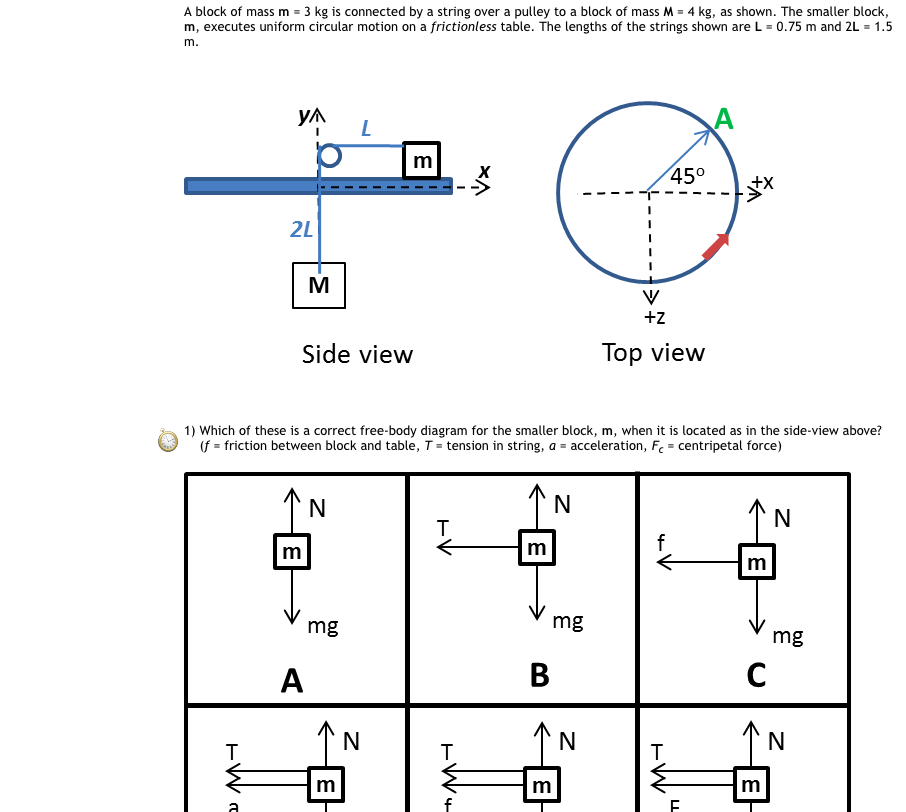

The direction of a centripetal force is toward the center of rotation, the same as for centripetal acceleration.

When the net force is equal to the centripetal force, and its magnitude is constant, uniform circular motion results. The component of any net force that causes circular motion is called a centripetal force. Just a few examples are the tension in the rope on a tether ball, the force of Earth’s gravity on the Moon, the friction between a road and the tires of a car as it goes around a curve, or the normal force of a roller coaster track on the cart during a loop-the-loop. Since the magnitude of the acceleration is constant, so is the magnitude of the net force, and since the acceleration points toward the center of the rotation, so does the net force.Īny force or combination of forces can cause a centripetal acceleration. Invite students to experiment by using various lengths of string and different weights.īecause an object in uniform circular motion undergoes acceleration (by changing the direction of motion but not the speed), we know from Newton’s second law of motion that there must be a net external force acting on the object. Using the same demonstration as before, ask students to predict the relationships between the quantities of angular velocity, centripetal acceleration, mass, centripetal force. We call the acceleration of an object moving in uniform circular motion the centripetal acceleration a c because centripetal means center seeking. If we imagine Δ s Δ s becoming smaller and smaller, then the acceleration would point exactly toward the center of rotation, but this case is hard to draw. (The center of rotation is at the center of the circular path).

Acceleration is in the direction of the change in velocity in this case it points roughly toward the center of rotation. The direction of the instantaneous tangential velocity is shown at two points along the path. Ask students what would happen if you suddenly cut the string? In which direction would the object travel? Why? What does this say about the direction of acceleration? Ask students to give examples of when they have come across centripetal acceleration.įigure 6.7 shows an object moving in a circular path at constant speed. Demonstrate circular motion by tying a weight to a string and twirling it around. The sharper the curve and the greater your speed, the more noticeable this effect becomes. This fictitious force is known as the centrifugal force. Inside the car it appears as if you are forced away from the center of the turn. This isn’t an actual force that is acting on you-it only happens because your body wants to continue moving in a straight line (as per Newton’s first law) whereas the car is turning off this straight-line path. What you notice is a feeling of sliding (or being flung, depending on the speed) away from the center of the turn. If you hold the steering wheel steady during the turn and move at a constant speed, you are executing uniform circular motion. You experience this acceleration yourself every time you ride in a car while it turns a corner. Therefore, an object undergoing uniform circular motion is always accelerating, even though the magnitude of its velocity is constant. We know from kinematics that acceleration is a change in velocity, either in magnitude or in direction or both. Note that, unlike speed, the linear velocity of an object in circular motion is constantly changing because it is always changing direction. The simplest case of circular motion is uniform circular motion, where an object travels a circular path at a constant speed. In the previous section, we defined circular motion. Ask students to give examples of circular motion.
#Circular motion body diagrams manual#
In addition, the High School Physics Laboratory Manual addresses content in this section in the lab titled: Circular and Rotational Motion, as well as the following standards:

The learning objectives in this section will help your students master the following standards:


 0 kommentar(er)
0 kommentar(er)
